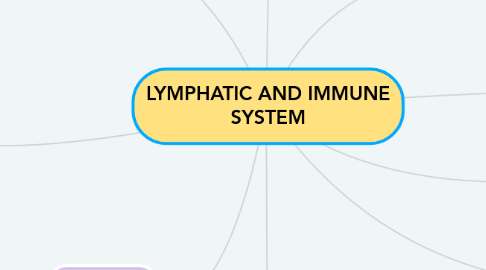
1. IMMUNE SYSTEM
1.1. Immunity: The development of specific resistance to infection is called immunity.
1.2. Antigen: Molecules from a pathogen or foreign organism that provoke a specific immune response.
1.3. Pathogens,: Damage from foreign substances, and harmful chemical.
2. Lymphocytes
2.1. B Cells ( Humoral Immunity )
2.1.1. Produce antibodies.
2.2. T Cells ( Cellular Immunity )
2.2.1. Helper T-Cells
2.2.1.1. - Help B cell produce antibodies. - Help other immune cell.
2.2.2. Cytotoxic T-Cells
2.2.2.1. - Kill infected cells. - Cancer cells.
3. Macrophages
3.1. - Phagocytic cells
3.1.1. Phagocytosis (process)
3.1.1.1. -Engulf foreign debris/microbes.
4. Lymphatic System consist
4.1. - Lymph - Lymph vessels - Lymph nodes - Four organs
5. Lymph Nodes
5.1. - Armpit - Neck - Groin
6. Lymph Organs
6.1. Tonsils
6.1.1. 3 groups: - The pharyngeal/adenoids - The palatine tonsils - The lingual tonsils
6.2. Spleen
6.2.1. -Produce lymph chyle/filter. -Store blood.
6.3. Thymus Gland
6.3.1. - T cells. - Lymphocyte production and maturation. - Protect against foreign substances and harmful micro-organisms.
6.4. Payer's Patches
6.4.1. - Known as aggregated lymphatic follicles. - Found in the walls of the small intestines. - Resembles tonsils. - Destroy bacteria.
7. LYMPHATIC SYSTEM
7.1. moves
7.1.1. Fluid in the body
7.1.1.1. Through
7.1.1.1.1. Lymph Vessels
7.1.1.2. Located nearby
7.1.1.2.1. Lymph nodes

